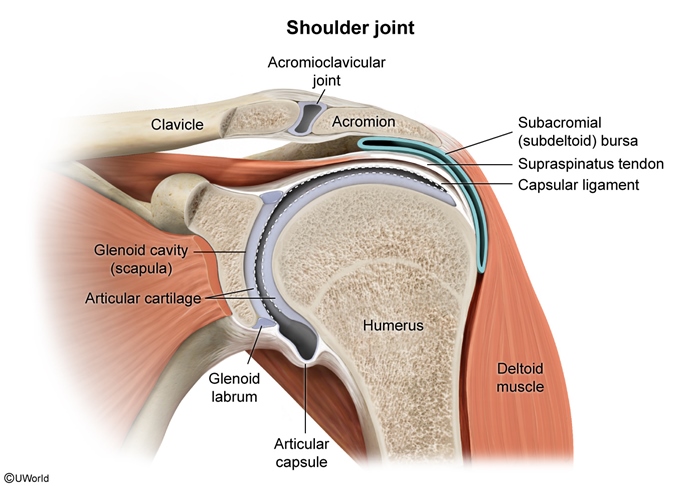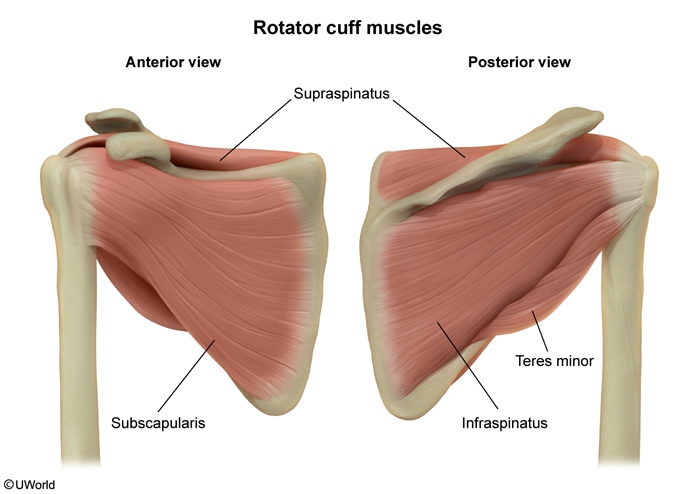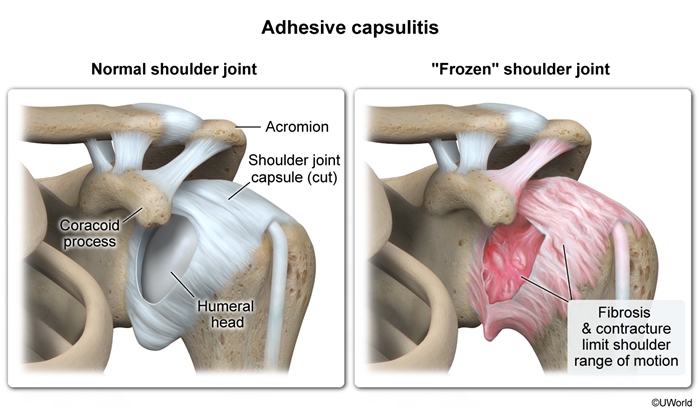Adhesive Capsulitis
Article Sections
Introduction
Adhesive capsulitis ("frozen shoulder") is a common shoulder condition (5% of the population) characterized by pain and stiffness (typically unilateral), leading to significant functional impairment. It is usually self-limited but complete recovery can take up to 1-3 years depending on severity. Residual stiffness is common.
Anatomy
The shoulder joint (ie, glenohumeral joint) is a highly mobile and complex ball-and-socket joint formed by the articulation between the head of the humerus and the glenoid fossa of the scapula (Figure 1). It allows for a wide range of motion, including flexion, extension, abduction, adduction, internal rotation, and external rotation. The shoulder joint includes the following structures:
- Glenoid labrum: a fibrocartilaginous complex that surrounds the outer edge of the glenoid fossa that provides stability to the shoulder joint (particularly against anterior and posterior movement) and serves as the attachment site for the joint capsule and several ligaments (eg, long head of biceps brachii), enhancing joint congruency and preventing dislocation.
Continue Learning with UWorld
Get the full Adhesive Capsulitis article plus rich visuals, real-world cases, and in-depth insights from medical experts, all available through the UWorld Medical Library.
Figures


